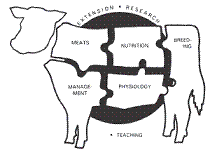Animal Science, Department of

Nebraska Beef Cattle Reports
Date of this Version
2017
Citation
2017 Nebraska Beef Cattle Report. University of Nebraska Extension MP104. Lincoln, NE.
Abstract
An experiment was conducted to evaluate the effect of long- term (16 years) corn residue grazing with cattle on soil compaction, soil structure, soil organic matter, and nutrients. Three treatments: 1) fall grazing (November through January; 1.8 to 2.5 AUM/ac), 2) spring grazing (February to middle April; 2.3 to 3.1 AUM/ac), and 3) control (no grazing) under a no- till irrigated corn- soybean system in eastern Nebraska were studied. Crop yields were increased and soil bulk density and cone index (parameters of soil compaction), wet soil aggregate stability (parameter of soil structural quality), and organic matter content were not affected by grazing during the fall. Spring grazing slightly increased crop yields while wet soil aggregate stability, bulk density, and organic matter content were unaffected. During spring grazing, only cone index was increased, but not above threshold levels. Crop residue grazing in the fall has no effect on soil and any effect from spring grazing is biologically unimportant.
Included in
Large or Food Animal and Equine Medicine Commons, Meat Science Commons, Veterinary Preventive Medicine, Epidemiology, and Public Health Commons


Comments
© 2016 The Board Regents of the University of Nebraska.